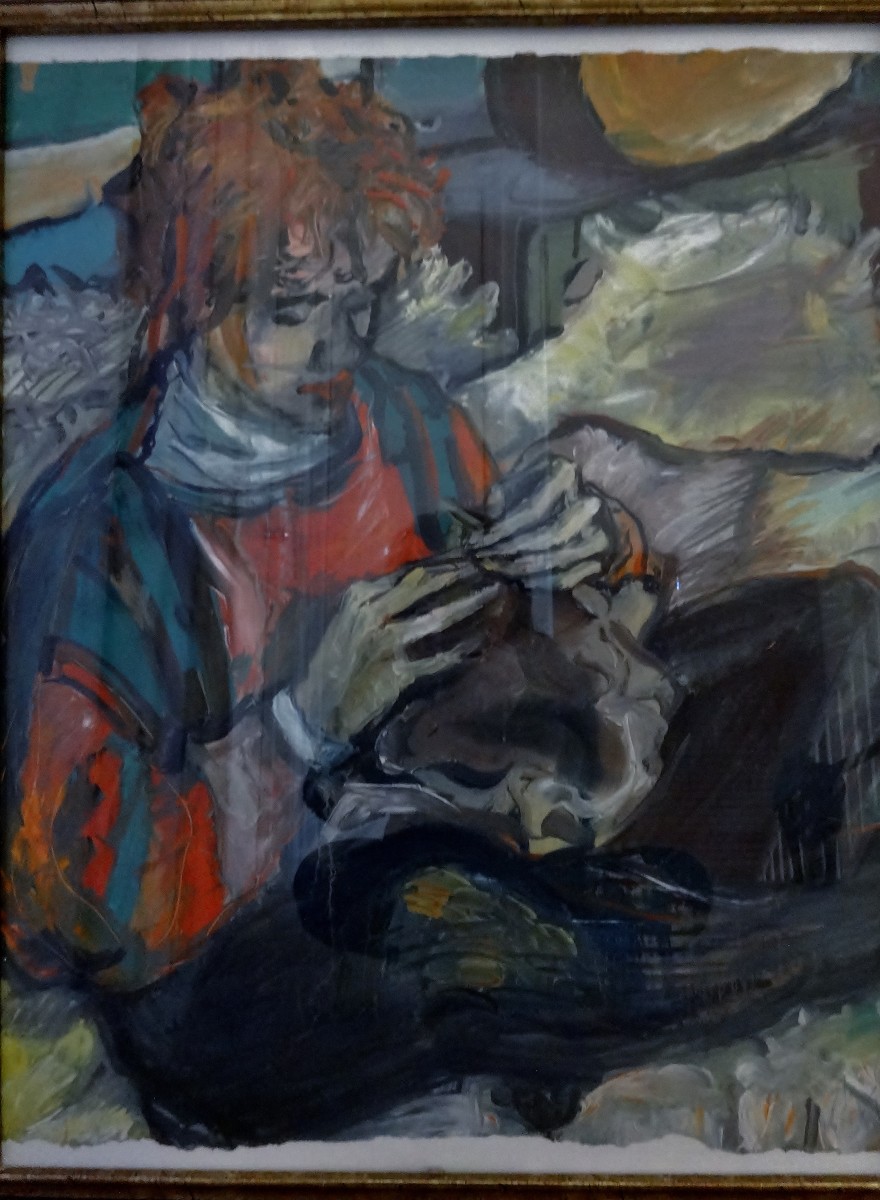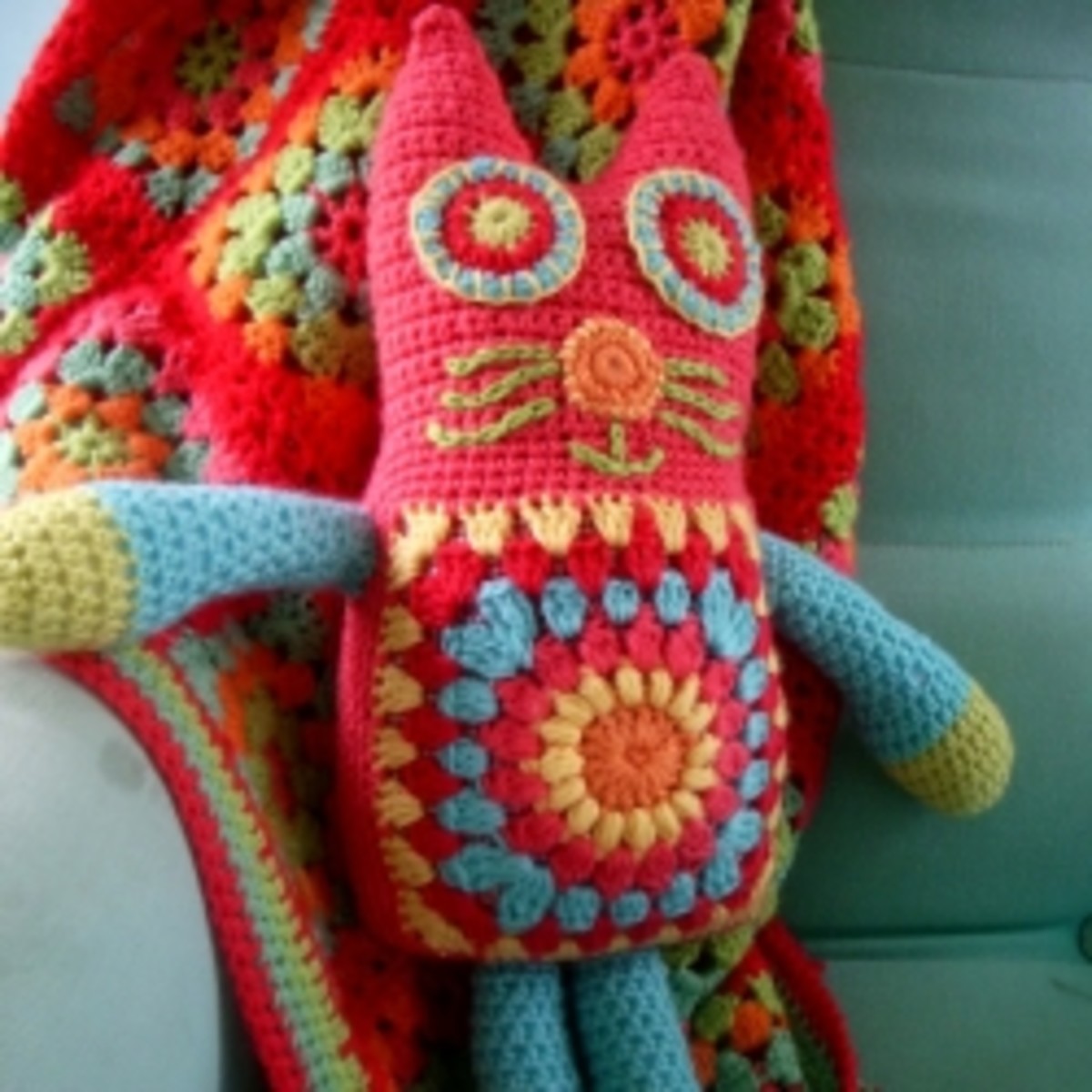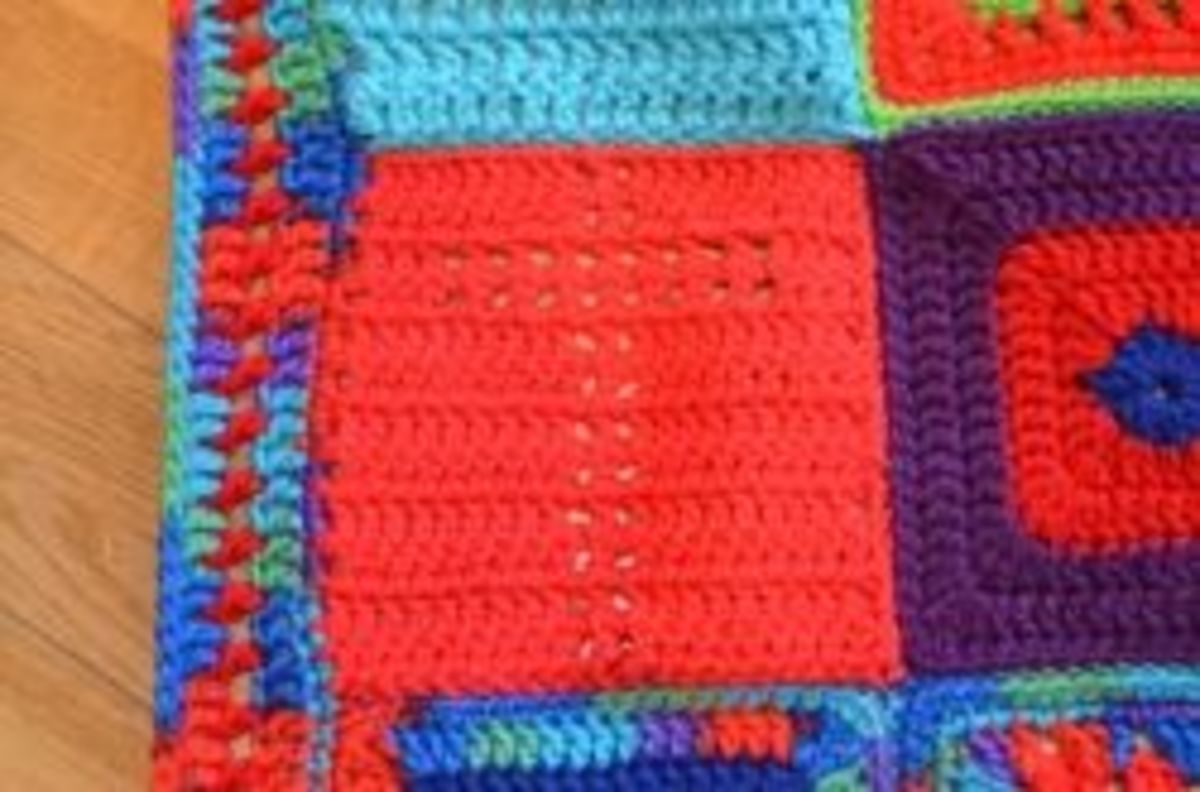- HubPages»
- Arts and Design»
- Crafts & Handiwork»
- Textiles
All That Yarn - Teaching Crochet or Knitting
Tiny items for a short class session.
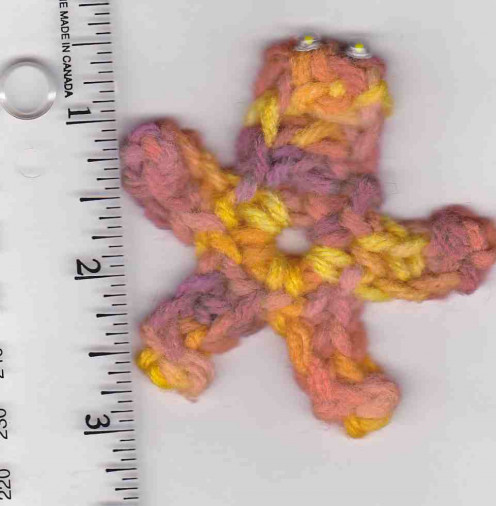
Design Your Lesson Plan.
Think about whom you will be teaching to crochet or knit, how long the class time will be and how many times you will meet together, and what the skill levels are for the students.
A couple of simple patterns for small projects like hats or dishcloths would be best for a short-term class of beginners. Allow at least two hours for students to learn the basic stitches like chain and single crochet, or cast on and knit stitch. A simple project helps with learning to turn at the end of a row, keeping the same number of stitches that they started with – no loss or added stitches on each row, and finishing off the piece when it is done.
You might find examples of lesson plans on the internet at the Craft Yarn Council website. They also offer a teacher certification course for knitting or crochet instructors. Mostly, I found it is set up for those who want to teach at a Michael’s craft store.
When I started out I had to begin completely from scratch, so I used the Beginning Knitting and Beginning Crochet leaflets from Coats & Clark / Red Heart Yarn. They were my handouts for every beginner as they contain the basic stitches step-by-step as well as extras like how to read a gauge, chose yarn, and work in the round with crochet. I purchased many of them when I was teaching at the college, and have a small supply still on hand for other classes I get to teach.
Teaching at the Community College
When I signed up to teach beginning crochet at the local community college, I was allowed to create my own lesson plans and find the patterns I wanted to use in class. I started out with very simple projects. The students built up their skills and knowledge each week with additional stitches and slightly harder patterns. I was told that I could not make copies of any copyrighted materials, but if I hand wrote or typed up the directions then the college copy place could run them off for my class.
So, for example, I began the class by teaching a potholder that used single crochet down both sides of the base chain and continued around and around until when it was folded it made a square pocket. This made sure they learned the single crochet stitch without having to worry about gain or loss of stitches at the ends of rows, and how to turn the piece for each new row. The next pattern was a crocheted dishcloth that used rows back and forth. Now that they had the single crochet down they could progress to the double crochet stitch.
I have watched people who are “experts” on television shows and found that the “Crochet Dude” is always turning his crochet pieces the incorrect (wrong) way. The correct way is turn it like a page in a book (if you are working right-handed). Any other way makes an extra strand of yarn that might accidentally be worked and cause extra stitches to mess up the pattern of the piece. Every time I see him doing it the wrong way, I just want to jump through the TV and show him the correct way to do it. I once heard him say that he was self taught, and that probably explains the wrong turning method he uses.
Then we progressed to working the top of a towel using several crochet stitches. It started out with the towel as the foundation “chain” because that was where the single crochet stitches went into the fabric. Then after a couple rows of single crochet, they did a few rows of double crochet including decreasing stitches. Then the top part was in triple crochet to narrow the neck of the towel and back to double crochet to make the flap with the button hole.
We did other patterns so that each week or every other week they added new crochet skills. The class was 10 weekly sessions, so they had about 20 hours of instruction if they showed up every week. It was fairly easy to catch up if they missed a week since the following week the class was finishing up on the previous week’s project. By the end of the class they knew all the basic crochet stitches and could use them in a pattern. Some went on to sign up again and work on making an afghan, with some assistance as needed, or other projects.
I did the same with the beginning knitting class when they added that to my class load. I ended up teaching both at the same class, so I often carried two balls of yarn as I walked around the class (the tables were set in a horseshoe or “U” shape). I would switch back and forth between showing the knitters how to do the knit stitches and the crocheters how to do the crochet stitches. I had to change off depending on what they were learning. I think it helped the knitters and crocheters to see what the other had to learn and then I might have had someone sign up to take the other beginning class the next session.
I taught at the college for six years, but then quit to go work on my Master’s Degree. The gal that took over “my” classes is still teaching there about 35 years later. I don’t know if I would still be teaching it all those years, if I had stayed in town, but I think it would have had to evolve to meet the changes in yarns and available supplies as well as the changing trends and the inclinations of people interested in knitting and crocheting.
Teaching at the Community College - Back Again
After teaching at the Rec Center for a while, I tried to get back into the local community college. I was able to submit a proposal online and was set up to teach a beginning class. It went fairly well as I had learned from my mistakes of the past to put in more sessions and do one-and-one-half hour classes.
An hour is too short to get started on learning how-to, and two hours is too long as fingers and hands get tired from the new positions they have to be in to learn knitting or crochet. Seems most of my classes are one-and-one-half hours long.
I set up to meet once a week for several weeks, 5-6 depending on the class, unlike my previous job at the college which was 10 weeks long. There was just enough time to learn the basics, so I went with just hat patterns for the class project. I had several hat patterns from free online sources in knit or crochet. I tried to add a few slightly advanced (more than just beginner) in case someone already knew how to do the stitches and wanted to challenge themselves.
After success in the first semester/session, I put in proposals for more classes. I added a Toys class with simple bear patterns, and later added scarves. A lot of these were classes I had tried at the Rec Center first, and I was able to adjust my hours and number of class meetings to better fit the projects.
The college is easy to do online for proposals and they decide where to fit in the classes timewise but I have choice of days. I had submitted the Toys class proposal as a "make a bear to donate to charity" and no one signed up for it. I took out the "donation" part of the title and then had several people sign up to take the class. One word can make a big difference, so if I don't come up with a good title, the college reserves the right to make their own title for the class. As long as I get enough signed up for the class, and it goes rather than gets cancelled, I am not picky about the title. I do get to submit the description so I can cover what I need to in that part of the class blurb that goes in the semester catalog or online.
Another Quick Project Idea

Teaching at the Local Yarn Shop.
Since I was teaching knitting and crochet at the college, I had limited choices to add in other types of crafts...with budgets already set for just one knit/crochet class per semester. I had other skills that I wanted to share with students and had to find out other ways to get in my teaching time.
So I made arrangements to teach a short class on shuttle tatting at a local sewing/craft/yarn store. The person in charge of having little workshops in the store wanted a tatting class and I was signed up to teach it. The class “room” set up was awkward as the table we held “class” at was right down the middle of the walkway near the back of the store. It was more public instead of private, which made teaching a little difficult. I had to negotiate my way around displays as I went around the table to give individual help to each student.
The class project was simple as I think I had only the two to three hours for one class session to teach the participants how to do tatting and to make something to take home. We did little tatted flowers to embellish blank note cards. This was before automated mail machines that would probably “eat” the thicker envelopes containing the cotton thread flowers that were glued onto the enclosed card. They had fun and learned something new.
I also signed up to teach a morning class on Hardanger embroidery at another needlework/yarn shop. The owner wanted a simple ornament class where people could buy the supplies in her shop, make the ornament and take it home the same day. I had learned a simple pattern that covered the main basic stitches of kloster block, satin stitch, and dove’s eye on one 3” square piece of Hardanger cloth. The day for the class came and no one showed up (as no one had even signed up, but sometimes that didn’t mean anything). So the owner and I had a lesson as she wanted to have the class because she wanted to learn how to do Hardanger stitches. It was a little tricky when she had to drop it to help a customer and then come back to start over again. She did get to learn how to do it and make a small ornament to display in the shop by the rest of the Hardanger supplies.
I also tried to set up a class to teach knitted teddy bears. The shop owner liked the idea, but once again there just was no interest from anyone to sign up for that class. I ended up just displaying the bears for sale in the shop in hopes of gaining some interest in making them. I had one person who wanted to learn but then backed out due to lack of time. Instead she wanted me to make her a bear with her specifications for colors. I declined. I have found that it is best to get the money up front and then make the item rather than make the item to the specifications wanted and then get stuck with the item because they either changed their mind or decided it cost more than they were really willing to pay for my time and materials. They usually change their mind when they have to pay for it first. I really would have preferred to teach her how to make her own teddy bear toy.
Class Project - My Samples Put Together

Teaching at the Recreation Center.
I was looking for a job and found that the RecreationCenter was asking for teachers. I applied and was interviewed by people I used to work with when I had a job at City Hall. I had to pitch my ideas on the class and go with what they wanted me to do. Since I didn’t know how much people wanted to spend on time and fees, I made the first class only two sessions of 1.5 hours each. I found out the hard way that I shorted myself and my students on time to learn the basics. Since I had been teaching individuals, here and there, and most of them picked up fairly quickly; some even started in like they had crocheted for years and not like it was their first time with a hook and yarn. I had not had a “slow” learner for many years so I didn’t adjust the time frame to get them going properly. It was a bit of a disaster.
Since it was the first time, the first class I had taught for the rec center, I was allowed to have less than the minimum allotment of students (which was calculated at five). I had only two people at the first class and they both came back to the second session with very different outcomes. The pattern was for a simple hat using all single crochet stitches. One came back with a misshapen mess and the other with one way too big. It was sad that I didn’t have more time to work with them and fix the problems that were occurring. Part of the problem was that they came to class about an hour late on the second session and shorted themselves on time (we had to be out of the room by 8:30 pm). I encouraged them to sign up for the next session but I never saw them again.
The next class had enough people and for those who attended each of the five sessions, they finished a project. I ran off copies of free patterns from the internet so they had choices for their projects. This proved to be good for them, but did not allow for everyone to be on the same level at the same time. So I went with only two patterns for the following classes, and if they got those done then I gave them more to work on.
I tried all sorts of ideas, and since the sessions were shorter that I used to have at the college, it was hard to gauge how much the students would learn in the sessions they showed up to attend. I had several who came once or twice out of five sessions and were disappointed that they didn’t get anything done. I even had a class for “advanced-beginners” where I designed it around an afghan with three different types of squares (repeated in the pattern eight times for 24 squares). I figured if they made one in class and then two more at home in the week between classes, then we should have enough squares by week four to put together half of the afghan. Then they could either have a short throw or finish up and do another set of squares to make the full afghan. Only one student showed up for every class and didn’t get all the “homework” done but had enough to get a start on the final afghan. Again, I thought I had only four sessions to teach this instead of the five that I found out I was scheduled to do. I had calculated that doing one new square each week for three weeks and then putting them together the fourth week should work. It was nice to have the extra week since some of the students missed a week due to illness or family needs, and then they had time to catch up. So building in a cushion would probably be a good idea for a class.
Quick and easy to make - and fun to do.
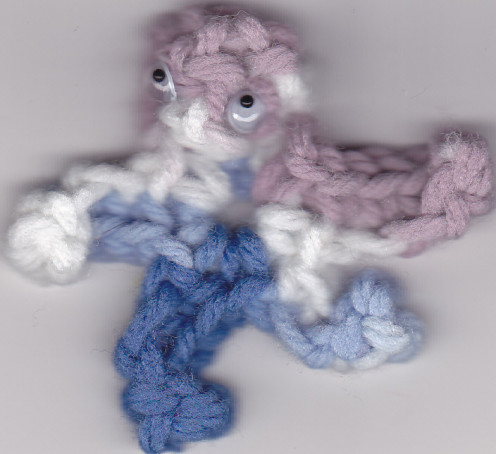
Teaching at the Extension Office or to a 4-H group
Another way to get some teaching skills “out there” to help children learn to knit or crochet is to check out the local Extension Office or 4-H group.
One time I was asked by a friend to help her out with a 4-H group of girls who wanted to learn to knit. Turned out she was going to be out of town for the entire session she had volunteered to do, so I was her substitute “volunteer” teacher.
There were five girls who were signed up to learn to knit for 4-H. This involved having a couple of projects done to enter into the county fair in the summer. I worked with them and modified some of my college lesson plans to better cover what they needed to learn. They had a 4-H “learn to knit” book that was rather sketchy in patterns but more on techniques. I brought in my Coats & Clark leaflets to help them with the stitches. I had them do a covered hanger (and I supplied the hangers), and only two of the girls finished them to enter in the county fair. One of the girls let us use her living room for our sessions. Towards the end of the sessions she got hooked on a soap opera and quit the group. We still met at her house until all the required sessions were done. I think only one of all the girls probably kept on knitting after that was done. I didn’t offer to do it again. I work better with adults, and there is less drama.
Another time, when I was working on my Master’s Degree, I was asked to teach crochet to a couple of 4-H girls who wanted to learn it. We met a few times so they could get the basics. At the second session, one of the girls brought in a completed project. I thought she had put in extra time at home. But she informed me that her mother had not liked how her project looked, so the mother took it all out and re-did it herself. I decided that the little girl was never going to learn to crochet if that kept happening, so when she dropped out of the sessions I was not surprised at all. The other little girl did a good job and learned what she wanted to know to get her 4-H class counted on her achievements. I was glad she decided that doing it herself was the best thing she could do for herself. I had told them both that if they got their dishcloth project done, then we would do my little crochet critter as a treat for the end of the class. Only the one who hung in there for all the classes got to do it, but she really enjoyed it.
Teaching at Michael's craft store
We finally got a Michael's craft store in our town in 2018. I went online and signed up to teach a simple bear class (knit or crochet) that would only take 3-4 hours of class time. The online proposal was accepted and I was set up to teach on Saturday afternoons. (The first year they were open, they didn't have the usual Saturday craft day scheduled so I got to use that day. They filled it the next year and I was no longer able to schedule a Saturday class.)
I didn't have to have a minimum class size like other venues I've taught at, so when I had just one sign up for one week and one for the next week I still got to teach the bears class. Lucky for me both students were friends of mine so the class was very relaxed and easy to teach.
I managed to get a bear done in parallel to the student so that I could show them as we worked how to do each part. The crochet pattern is all single crochet and chains so anyone who knew how to crochet could make a bear. Same for the knit bear which was all knit stitch (garter stitch). The hard part for one student was the face embroidery work. In order to make the bear "baby proof" the face had to be sewn on not using plastic eyes. Every bear comes out different based on the face, and the yarn colors used for the body.
I got the pattern from Knitting Without Borders online. It was one I stumbled across while searching for donation toys for my other class. The link is: http://knittingwithoutborders.jigsy.com/
Simple Crochet Bear from http://knittingwithoutborders.jigsy.com/


